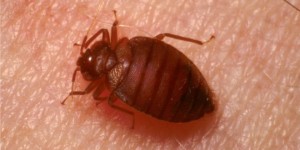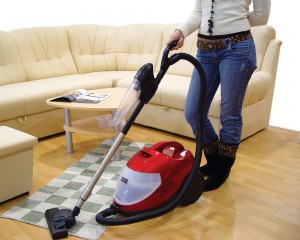Bed bugs are flat, oval shaped insects in reddish brown color. They live on the blood of humans and other warm-blooded hosts and swell in size after their meal. Bed bugs cannot fly. They just move from one place to another, on floors, walls and ceiling. They mostly come out at night to feed on human blood. Bed bugs are also known as mahogany flats, red coats and chinches. Bed bugs do not cause any hazard to the health, but their mere presence can be very irritating.
Bed bugs can infest not only rooms, but can also in offices, stores, hotels, gyms and several other places. Once they reach your home, it becomes extremely difficult to control them without the help of an experience pest specialist.
Bed bugs had declined in the mid-20th century, but have undergone a dramatic resurgence. There are several reports on the increasing number of infestations. Bed bugs are extremely hard to detect and have an unpleasant smell.
Where Bed Bugs Hide
These tiny pests enter the home through luggage, clothing, used furniture and beddings. They hide in unusual places and are most likely to be found in small cracks near the bed or walls. They have flat bodies and small structure, which make them fit into tiny spaces. Bed bugs are mostly found in groups. Over the time, these bugs scatter through the entire house.
Bed bugs are mainly active at night and bite when people are sleeping. They pierce their skin and withdraw the blood through their elongated beak. They feed for 3 to 10 minutes and then crawl away unnoticed. Their bites are painless at first, but turn into itchy welts after a while, which can even lead to allergic reactions.
Getting rid of bedbugs begins with cleaning up the places where bed bugs live. The procedure to get rid of bed bugs involves:
1. Examine:
Examine the bed carefully so that not a single bug remains. To get rid of the bed bugs, the first thing you need to do is dismantle the bed and remove the mattress, pillows, cover, blankets and bed liners to check for the signs of bugs and their excrement. Do not use them until the entire room is cleaned properly. Do not forget to examine the nightstands and dressers. Bed bugs often hide in the cracks and corners of the bedside tables. Turn the bedside stands upside down to inspect the woodwork underneath.
Bugs are often found in the mattress or the gauze fabric underlying the box spring. The crack and crevices of the wooden bed frames should be carefully examined. Bed bugs also reside among items stored underneath the bed.
Check the areas near the telephones and radios, cupboards, edge of the carpet, inside the bed and in the electrical outlets. Check your wardrobe as well as they can attach to the clothes. If the bed bugs have infested the cupboard, then you will have to take out all the clothes and wash them in hot water.
Check the chair, sofa and upholstery as well. Sofa is a favorite hotspot of bed bugs. Pay close attention to the tufts and crevices beneath the cushions.
Other common places of bug infestation include cracks in the wood molding, ceiling to wall junctures and wall-to-wall carpeting. Use a flashlight for better inspection.
2. Heat:
Smaller items can be de-infested by heating. Wrap them in a plastic and place them in a hot and sunny location for a few days. Bed bugs also succumb to the cold temperature. However, it is practically impossible to freeze a room to kill them.
3. Mattress:
It is extremely difficult to get rid of bed bugs in a mattress. Even chemicals cannot help to get rid of the bugs completely. It is best to throw out the mattress. If you decide to keep it, then cover it with a plastic mattress cover. Zip the mattress up and leave them undisturbed for a year. The life cycle of a bug is one year, so make sure that nothing gets out of the mattress before a year is up. Treat the pillows with chemicals or simply throw them out.
4. Clean:
Clean the entire room with a natural cleanser. Clean each surface properly- inside the cupboards, behind the furniture, the light fixtures, wall sockets and everything else in the house. Keep back all the belongings once everything is clean. Repeat the cleaning process every 10 days. Clean the linens, curtains and clothing in hot water and let it dry in the sunlight. Use a stiff brush to clean the beddings and mattress before vacuuming.
5. Steam:
Steaming the bed bugs is one of the most effective methods to control them. Bed bugs and their eggs cannot tolerate steam. Moreover, steam can travel deeply into areas that are out of reach, which can kill the bugs in their nesting areas. Steam the holes on the walls, carpets, furniture, curtain, cabinet, fixture and other objects.
The steaming device is easily available at the local hardware shop. The device should have a high temperature setting with a strong vapor flow. Adjust the settings of the device so that the steam does not flow away the bed bugs. Utilize all the attachments so that you can steam even the smallest of the hiding areas. You can also use a simple electric kettle by attaching a flexible tube. Opt for dry steam, as is it less damaging.
6. Vacuum your house:
Vacuuming the house will remove the bugs and eggs from walls, carpets, mattresses and other surfaces. It also helps to locate the areas where bed bug is hiding. Pay maximum attention to the edges, nooks, crannies, crack, box springs and mattresses. Dispose the vacuum contents as soon as you are done with it.
7. Repair:
Repair the cracks and glue the loosened wallpaper to get rid of the bed bug infestation. This will prevent the bed bugs from infesting the room. Apply caulk to every possible crack, pipes, ceiling, floors and other areas that are susceptible to travel by these little pests.
8. Insecticides:
Do not try to exterminate the bugs yourself. Spraying the insecticides with your own hands can be very dangerous. Generally, it is safest to hire an experienced pest control professional for bedbug extermination. The inspectors often inject a pyrethrum based flushing agent into the crevices to kill the bugs. Special care needs to be taken while spray pyrethroid, especially when children are around. Spraying should always be done when children are not present and the instruction on the label should be followed.
Remove the dirt and debris using a vacuum cleaner and then spray the insecticides into the areas. Dust formulation can prevent the seepage of insecticides in wall voids and attics. Do not use readily available aerosol sprays, as it will cause the bed buds to scatter, making eradication more difficult. Repeat the insecticide application if the bed bugs do not exterminate.
9. Discard the affected items:
Infested mattress and box springs need to be discarded after the insecticide application. Do not clutter your house. Throw away all the items that you do not require.
Natural remedies:
1. Silica gel:
Grind some silica gel and apply it all over in your rooms. Put some on the mattress, bedspring and around the beds and wall. Silica gel sticks to the bugs, which cannot be shaken off, causing the bug to dehydrate and die. Do not inhale the silica gel.
2. Diatomaceous Earth:
Diatomaceous Earth can also be used to get rid of bed bugs. It is an abrasive dust that dries out the bugs as soon as they come in contact with it. Lightly dust all the cracks, crevices and voids to treat the bugs. D.E is relatively inexpensive and is easily available online. It provides the same effect as the silica gel and poses no danger to children and pets. While purchasing Diatomaceous Earth, make sure that they are for indoor use only.
3. Rubbing alcohol:
Spray some rubbing alcohol in on the bed bugs. This kills them on the spot. Use the rubbing alcohol to kill the visible eggs, and then call an exterminator for further de-infesting.
4. Bug bed powder:
The easiest way to kill bed bug yourself is by sprinkling bed bug powder. Head to a local store and purchase a bottle of flea powder. Sprinkle some powder around the borders of the room and bed. The bug starts to dehydrate and eventually die as they cross the powder. The powder dehydrates the bed bugs, thereby killing them. This is effective for treating for treat small infestations. For more severe situation, you need to hire a pest killer.
Preventive measures:
- Do not purchase second hand bedding and furniture, especially those made of wood. If urgently required, examine the furniture closely before bringing them to the home.
- Inspect your residence regularly, especially after moving into a new house or a trip. Follow a weekly and monthly follow up treatment to prevent the re-infestations.



